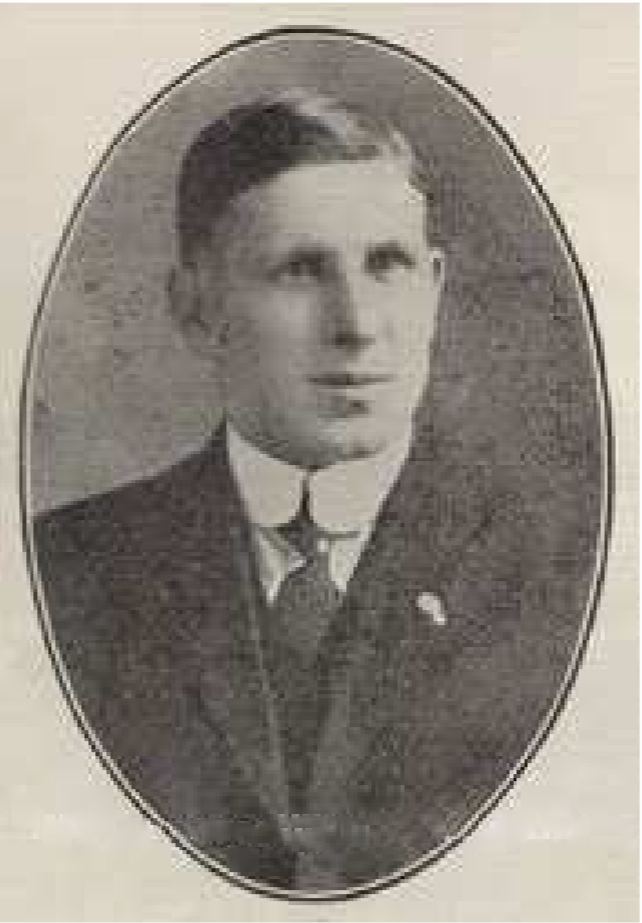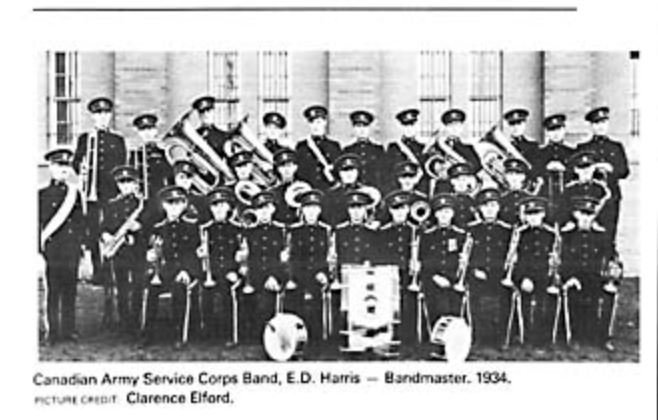|
Royal Canadian Postal Corps
The Royal Canadian Postal Corps (RCPC) was an administrative corps of the Canadian Army. The Canadian Postal Corps was redesignated The Royal Canadian Postal Corps on 20 June 1961. The badge of The Royal Canadian Postal Corps consists of a horn, with a Queen's Crown on top. Superimposed at the center of the horn is the text ''RCPC''. At the bottom the text "Servire Armatis" is written on a ribbon. Unification When the Army, Royal Canadian Navy, and Royal Canadian Air Force were merged in 1968 to form the Canadian Forces, the administrative Corps of the Army were deactivated and merged with their Naval and Air Force counterparts to form the Canadian Forces' personnel branches. The Royal Canadian Postal Corps, Royal Canadian Army Service Corps clerical trades, and Royal Canadian Army Pay Corps were merged to form the Administration Branch (later merged with the Logistics Branch). Notable members * Father David Bauer (1924–1988), Basilian priest, founder of the Canada men's n ... [...More Info...] [...Related Items...] OR: [Wikipedia] [Google] [Baidu] |
Canada
Canada is a country in North America. Its ten provinces and three territories extend from the Atlantic Ocean to the Pacific Ocean and northward into the Arctic Ocean, covering over , making it the world's second-largest country by total area. Its southern and western border with the United States, stretching , is the world's longest binational land border. Canada's capital is Ottawa, and its three largest metropolitan areas are Toronto, Montreal, and Vancouver. Indigenous peoples have continuously inhabited what is now Canada for thousands of years. Beginning in the 16th century, British and French expeditions explored and later settled along the Atlantic coast. As a consequence of various armed conflicts, France ceded nearly all of its colonies in North America in 1763. In 1867, with the union of three British North American colonies through Confederation, Canada was formed as a federal dominion of four provinces. This began an accretion of provinces an ... [...More Info...] [...Related Items...] OR: [Wikipedia] [Google] [Baidu] |
Administration Branch (Canadian Forces)
Administration may refer to: Management of organizations * Management, the act of directing people towards accomplishing a goal ** Administrative Assistant, traditionally known as a Secretary, or also known as an administrative officer, administrative support specialist, or management assistant is a person whose work consists of supporting management, including executives, using a variety of project management, communication, or organizational skills, while in some cases, in addition, may require specialized knowledge acquired through higher education. ** Administration (government), management in or of government *** Administrative division ** Academic administration, a branch of an academic institution responsible for the maintenance and supervision of the institution ** Arts administration, a field that concerns business operations around an art organization ** Business administration, the performance or management of business operations *** Bachelor of Business Administrati ... [...More Info...] [...Related Items...] OR: [Wikipedia] [Google] [Baidu] |
Army Units And Formations Of Canada In World War II
An army (from Old French ''armee'', itself derived from the Latin verb ''armāre'', meaning "to arm", and related to the Latin noun ''arma'', meaning "arms" or "weapons"), ground force or land force is a fighting force that fights primarily on land. In the broadest sense, it is the land-based military branch, service branch or armed service of a nation or country. It may also include aviation assets by possessing an army aviation component. Within a national military force, the word army may also mean a field army. In some countries, such as France and China, the term "army", especially in its plural form "armies", has the broader meaning of armed forces as a whole, while retaining the colloquial sense of land forces. To differentiate the colloquial army from the formal concept of military force, the term is qualified, for example in France the land force is called ''Armée de terre'', meaning Land Army, and the air and space force is called ''Armée de l'Air et de l’Espace' ... [...More Info...] [...Related Items...] OR: [Wikipedia] [Google] [Baidu] |
Army Units And Formations Of Canada In World War I
An army (from Old French ''armee'', itself derived from the Latin verb ''armāre'', meaning "to arm", and related to the Latin noun ''arma'', meaning "arms" or "weapons"), ground force or land force is a fighting force that fights primarily on land. In the broadest sense, it is the land-based military branch, service branch or armed service of a nation or country. It may also include aviation assets by possessing an army aviation component. Within a national military force, the word army may also mean a field army. In some countries, such as France and China, the term "army", especially in its plural form "armies", has the broader meaning of armed forces as a whole, while retaining the colloquial sense of land forces. To differentiate the colloquial army from the formal concept of military force, the term is qualified, for example in France the land force is called ''Armée de terre'', meaning Land Army, and the air and space force is called ''Armée de l'Air et de l’Espace' ... [...More Info...] [...Related Items...] OR: [Wikipedia] [Google] [Baidu] |
Administrative Corps Of The Canadian Army
Administration may refer to: Management of organizations * Management, the act of directing people towards accomplishing a goal ** Administrative Assistant, traditionally known as a Secretary, or also known as an administrative officer, administrative support specialist, or management assistant is a person whose work consists of supporting management, including executives, using a variety of project management, communication, or organizational skills, while in some cases, in addition, may require specialized knowledge acquired through higher education. ** Administration (government), management in or of government *** Administrative division ** Academic administration, a branch of an academic institution responsible for the maintenance and supervision of the institution ** Arts administration, a field that concerns business operations around an art organization ** Business administration, the performance or management of business operations *** Bachelor of Business Administratio ... [...More Info...] [...Related Items...] OR: [Wikipedia] [Google] [Baidu] |
ECW Press
ECW Press is a Canadian book publisher located in Toronto, Ontario. It was founded by Jack David and Robert Lecker in 1974 as a Canadian literary magazine named ''Essays on Canadian Writing''. They started publishing trade and scholarly books in 1979. ECW Press publishes a range of fiction, non-fiction, poetry, sport, and pop culture. In 2015, Publishers Weekly listed ECW Press as one of the fastest-growing independent publishers in North America. ECW Press releases around 50 new titles a year. History The company was founded by Jack David and Robert Lecker in 1974 as a Canadian literary magazine named ''Essays on Canadian Writing''. Five years later, ECW published its first books—trade and scholarly titles. It started with two principal series: the ''Annotated Bibliography of Canada's Major Authors'' (ABCMA) and ''Canadian Writers and Their Works'' (CWTW). Through the 1980s, ECW upgraded its typesetting facilities, published reference titles, and began to service thi ... [...More Info...] [...Related Items...] OR: [Wikipedia] [Google] [Baidu] |
Hockey Hall Of Fame
, logo = Hockey Hall of Fame Logo.svg , logo_upright = 0.5 , image = Hockey Hall of Fame, Toronto.jpg , caption = The Hall's present location on Yonge Street since 1992 , map_type = , former_name = , established = 1943 , location = 30 Yonge StreetToronto, OntarioM5E 1X8 , coordinates = , type = , founder = James T. Sutherland , chairperson = Lanny McDonald , embedded = , website = The Hockey Hall of Fame (french: Temple de la renommée du hockey) is a museum and hall of fame located in Toronto, Ontario, Canada. Dedicated to the history of ice hockey, it holds exhibits about players, teams, National Hockey League (NHL) records, memorabilia and NHL trophies, including the Stanley Cup. Founded in Kingston, Ontario, the Hockey Hall of Fame was established in 1943 under the leadership of James T. Sutherland. The first class of honoured members was inducted in 1945, before the Hall of Fame had a permanent location. It moved to Toronto in 1958 after the NHL withdrew ... [...More Info...] [...Related Items...] OR: [Wikipedia] [Google] [Baidu] |
Canada Men's National Ice Hockey Team
The Canada men's national ice hockey team (popularly known as Team Canada; french: Équipe Canada) is the ice hockey team representing Canada internationally. The team is overseen by Hockey Canada, a member of the International Ice Hockey Federation. From 1920 until 1963, Canada's international representation was by senior amateur club teams. Canada's national men's team was founded in 1963 by Father David Bauer as a part of the Canadian Amateur Hockey Association, playing out of the University of British Columbia. The nickname "Team Canada" was first used for the 1972 Summit Series and has been frequently used to refer to both the Canadian national men's and women's teams ever since. Canada is the leading national ice hockey team in international play, having won the 1972 Summit Series against the Soviet Union, a record four Canada Cups dating back to 1976, a record two World Cu ... [...More Info...] [...Related Items...] OR: [Wikipedia] [Google] [Baidu] |
David Bauer (ice Hockey)
Father David William Bauer (November 2, 1924November 9, 1988) was a Canadian ice hockey player and coach, educator and Catholic priest. He was offered a playing contract by the Boston Bruins at age 15, but declined on the advice of his father to complete a proper education. The experience of not pursuing his dream of playing professional hockey was traumatic for Bauer, who then committed himself to look for more meaning in life and play a role in world peace. After he served as captain of the Toronto St. Michael's Majors for two seasons and won the 1944 Memorial Cup, he became ordained as a Catholic priest in the Congregation of St. Basil and taught at St. Michael's College School. He coached multiple levels of hockey at St. Michael's, sat on the junior ice hockey council for the Ontario Hockey Association, lobbied for a shortened playing schedule for students athletes, and coached the St. Michael's Majors to victory in the 1961 Memorial Cup. Bauer was reassigned to St. Mar ... [...More Info...] [...Related Items...] OR: [Wikipedia] [Google] [Baidu] |
Royal Canadian Army Pay Corps
The Royal Canadian Army Pay Corps (RCAPC) was an administrative corps of the Canadian Army with its own cap badge, and other insignia and traditions. It was established in 1906 as the Canadian Army Pay Corps. It was responsible for administering all financial matters. The Canadian Army Pay Corps began officially operating on 1 July 1907. It was redesignated the Royal Canadian Army Pay Corps on 1 Nov 1920. In 1967 the corps was amalgamated with other units into the Logistics Branch of the newly formed Canadian Forces. Unification When the Army, Royal Canadian Navy, and Royal Canadian Air Force were merged in 1968 to form the Canadian Forces, the administrative Corps of the Army were deactivated and merged with their Naval and Air Force counterparts to form the Canadian Forces' personnel branches defined in Canadian Forces Administrative Orders (CFAOs) as "...cohesive professional groups...based on similarity of military roles, customs and traditions." ''CFAO 2-10)'' [...More Info...] [...Related Items...] OR: [Wikipedia] [Google] [Baidu] |
Canadian Army
The Canadian Army (french: Armée canadienne) is the command responsible for the operational readiness of the conventional ground forces of the Canadian Armed Forces. It maintains regular forces units at bases across Canada, and is also responsible for the Army Reserve, the largest component of the Primary Reserve. The Army is headed by the concurrently held Commander of the Canadian Army and Chief of the Army Staff, who is subordinate to the Chief of the Defence Staff. The Army is also supported by 3,000 civilian employees from the civil service. Formed in 1855, as the Active Militia, in response to the threat of the United States to the Province of Canada after the British Garrison left for the Crimean War. This Militia was later split into the Permanent Active Militia and the Non-Permanent Active Militia. Finally, in 1940, an Order in Council was issued to rename the active militias to the Canadian Army. On 1 April 1966, prior to the unification of the Canadian Armed For ... [...More Info...] [...Related Items...] OR: [Wikipedia] [Google] [Baidu] |
Royal Canadian Army Service Corps
The Royal Canadian Army Service Corps (RCASC) was an administrative and transport corps of the Canadian Army. The Canadian Army Service Corps was established in the Non-Permanent Active Militia in 1901 and in the Permanent Active Militia in 1903. The Canadian Permanent Army Service Corps was redesignated The Royal Canadian Army Service Corps on 3 Nov 1919. History The RCASC was established by General Order No. 141, as the Canadian Army Service Corps (CASC), on November 1, 1901. The CASC was modelled directly off the British Army Service Corps to provide all transportation and supply services to the Army. Initially, the CASC consisted of four companies to support the Active Militia units (No. 1 at London, No. 2 at Toronto, No. 3 at Kingston and No. 4 at Montreal). The Permanent Component of the CASC was created under General Order 21 of December 1903 and the corps grew quickly, doubling the number of units by 1903, and growing by another three companies by 1905. By the summer of ... [...More Info...] [...Related Items...] OR: [Wikipedia] [Google] [Baidu] |






